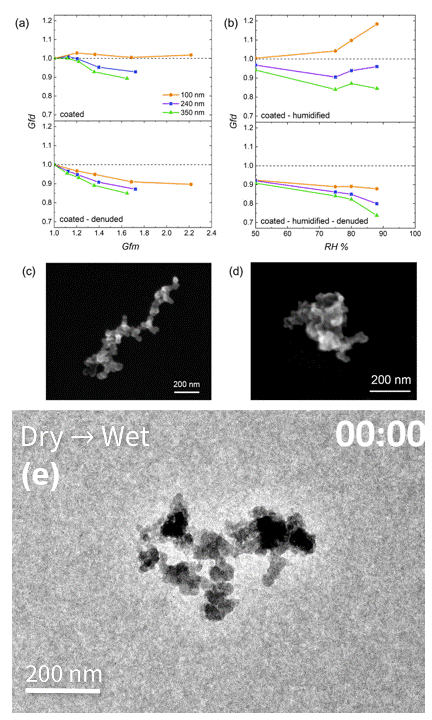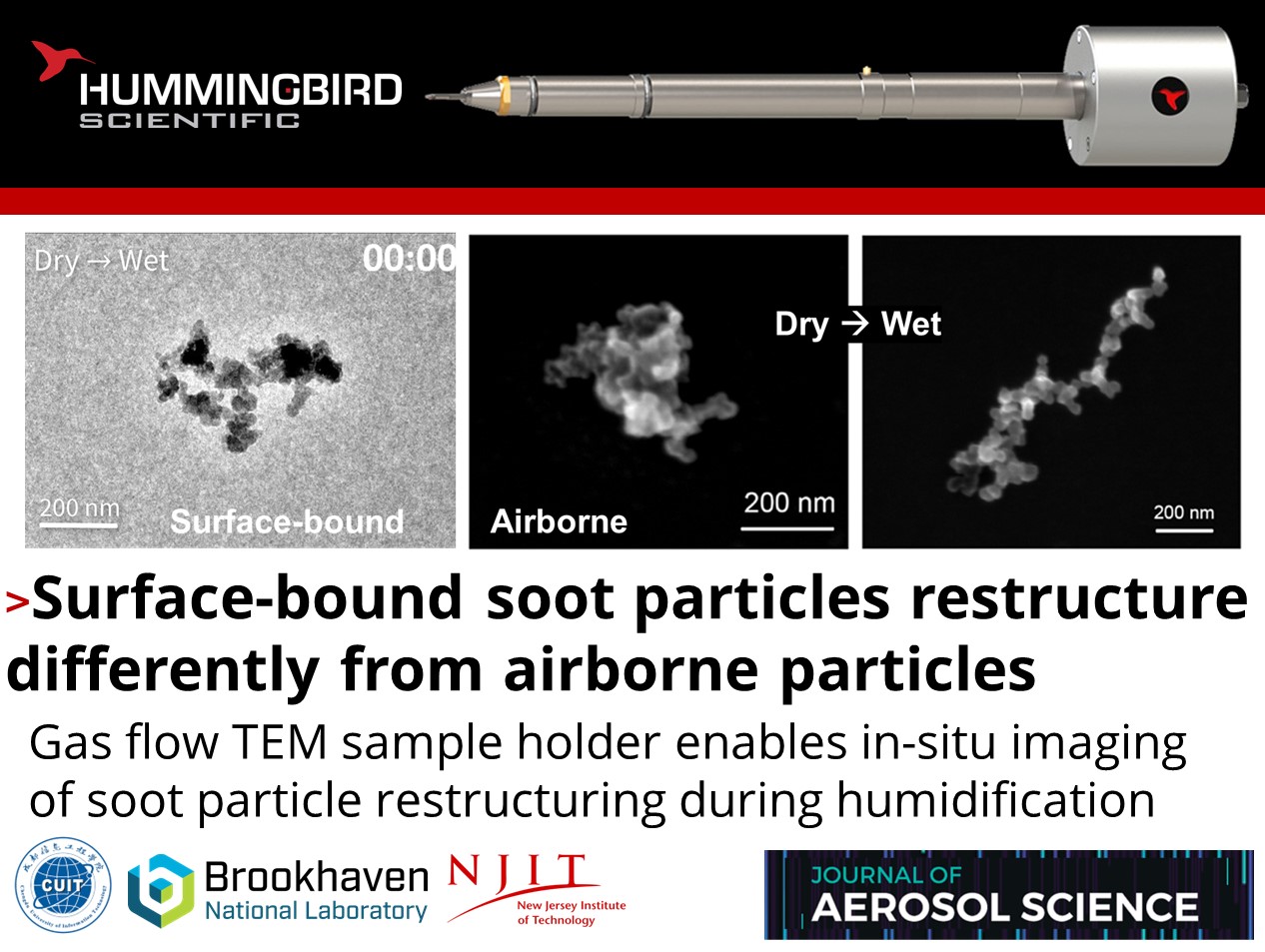How do surface-bound soot particles aggregate differently from airborne particles?
Chao Chen, Dmitri N. Zakharov, and Alexei F. Khalizov, from the Chengdu University of Information Technology, Brookhaven National Laboratory, and the New Jersey Institute of Technology, respectively, published recent work characterizing morphological changes in fractal soot particles coated with sulfuric acid during humidification using the Hummingbird Scientific gas flow TEM sample holder. Two different methodologies were applied: tandem differential mobility analysis (TDMA) for airborne soot particles and gas cell transmission electron microscopy (TEM) for surface-bound soot particles.

TDMA results indicated that airborne coated soot particles readily restructured upon humidification, becoming more compact. However, only minor-to-negligible morphological changes in surface-bound soot particles were observed under TEM, remaining fractal despite the comparable relative humidities used in the two techniques. The difference was attributed to anchoring of the particles to the SiN substrate by surface adhesion, and the wicking away of the surface coating from the soot aggregate to the substrate by capillary forces. The Hummingbird Scientific gas flow TEM sample holder allowed the introduction of dry and humidified gas flows, enabling in-situ observation of the soot particles’ morphological changes during humidification and drying cycles, providing valuable insights into the restructuring behavior of surface-bound soot aggregates.
Reference:
Chao Chen, Dmitri N. Zakharov, and Alexei F. Khalizov, J. Aero. Sci. 168 106103 (2023) DOI: 10.1016/j.jaerosci.2022.106103
Full paper Copyright © 2022 Elsevier Ltd.
View All News

